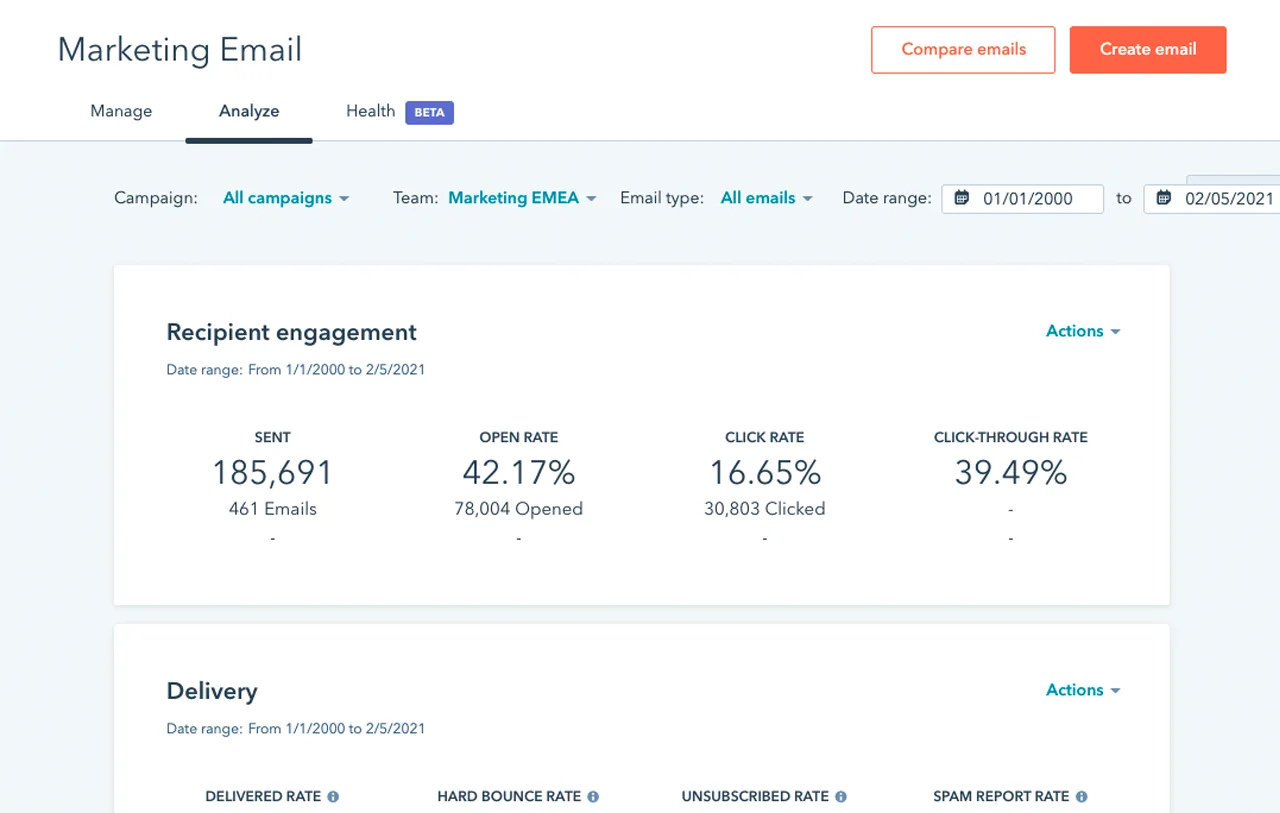Generating qualified leads is critical for business growth, yet many companies struggle to execute effective strategies that turn prospects into customers. Studies show that 45% of marketers rank lead generation as their top challenge, and for good reason—it directly impacts revenue and growth potential. Without a steady influx of quality leads, businesses face stagnant sales pipelines and missed opportunities.
In an increasingly competitive landscape, success requires a strategic, data-driven approach to capturing and nurturing prospects. This is where HubSpot Starter can make a difference, offering a suite of powerful, easy-to-use tools designed to help businesses grow by attracting, engaging, and converting leads efficiently. Whether you’re a small business just starting out or a growing company looking to scale, HubSpot Starter equips you to meet prospects where they are, streamline lead-capture efforts, and maximize the impact of your campaigns. This blog post explores the importance of lead generation and some of the challenges involved. We define the difference between prospects and leads for both inbound and outbound marketers. We also explore three essential steps to generate more qualified leads for growth with best-in-class lead conversion solutions such as HubSpot. Be sure to follow us on LinkedIn. Now let’s get started.
The Difference Between Prospects and Qualified Leads
Inbound Marketing
In inbound marketing, understanding the difference between a prospect and a qualified lead is crucial for effective targeting and nurturing. A prospect is any individual or organization that fits your ideal customer profile and may have shown some level of interest in your product or service. However, their interest is often initial or superficial, such as visiting your website or downloading a free resource. They have not yet demonstrated a readiness to engage further or make a purchase.
A qualified lead, on the other hand, is a prospect who has moved further along the buyer’s journey and meets specific criteria that indicate they are likely to become a customer. This qualification is often based on factors like engagement with your content (e.g., filling out a form, attending a webinar) and alignment with your target audience’s demographics, behaviors, or needs.
Inbound marketing focuses on nurturing prospects into qualified leads by offering value through personalized content, timely follow-ups, and automation.

Outbound Marketing
In outbound marketing, the distinction between a prospect and a qualified lead lies in how they are identified and engaged within the marketer’s proactive outreach efforts.
Prospects For Outbound Marketers
A prospect in outbound marketing is someone the company identifies as a potential fit for their product or service, typically through research or purchased contact lists. These individuals may have no prior knowledge of or interest in the company and are approached through methods like cold calling, direct mail, or unsolicited emails. Prospects are usually selected based on broad criteria, such as industry, job title, or location, but they haven’t yet indicated interest or intent.
Qualified Leads for Outbound Marketers
A qualified lead is a prospect who has responded positively to outbound efforts and shown genuine interest in the product or service. This qualification is often based on explicit criteria, such as a returned phone call, scheduling a demo, or expressing a need for the solution during a conversation. Sales teams typically qualify leads further based on budget, authority, need, and timeline (BANT).
Outbound marketing relies heavily on the marketer’s ability to identify, contact, and qualify leads actively, rather than waiting for prospects to come to them as in inbound marketing.
Whether inbound or outbound, optimizing engagement remains the key challenge for small and large businesses alike. Understanding those challenges, developing strategies to solve the challenges, and utilizing the right tools are keys to growth and value creation. Let’s take a look at how tools such as HubSpot help companies navigate these challenges.

Step 1: Attract More Leads by Engaging Customers Where They Are
We live in an attention economy where consumer focus is a scarce and valuable resource. With people bombarded by thousands of ads, emails, and messages daily, capturing their attention requires precision and relevance. The average consumer spends over two hours on social media each day, with platforms like Facebook, Instagram, and LinkedIn influencing over 70% of purchase decisions. Additionally, 81% of shoppers research online before buying, often encountering brands through search engines, social media, or email. These figures highlight why it’s essential to engage potential customers on the platforms they frequent most.
Meeting customers where they are allows you to connect with them naturally and establish trust. For example, a compelling Instagram post might spark interest, while a Google ad provides the final nudge to act. Omnichannel campaigns ensure a seamless experience across platforms, helping you guide customers through their journey without losing their attention to competitors.
How HubSpot Helps
HubSpot Starter empowers you to manage omnichannel campaigns from one centralized space, saving time while ensuring a cohesive customer experience.
- Unified dashboard: Create, execute, and monitor campaigns across social media, email, paid ads, and blogs in one place.
- Consistent messaging: Ensure your branding and messaging are aligned across all channels, reinforcing your value proposition.
- Streamlined collaboration: Teams can collaborate on campaigns without switching between tools, improving efficiency and reducing errors.

AI Content Writer
- Effortless content creation: Generate high-quality, engaging copy for social media posts, blogs, and emails with the help of HubSpot’s AI-powered tools.
- Tailored messaging: Quickly craft content that resonates with specific audience segments.
- Increased engagement: Use AI-generated suggestions to create posts that drive likes, shares, and clicks, improving your reach and engagement.
Ads Software
- Simplified ad management: Plan, launch, and manage PPC campaigns for platforms like Google Ads and Facebook directly within HubSpot.
- Performance insights: Gain visibility into which ads are converting prospects into leads, so you can allocate your budget more effectively.
- Optimization tools: Make data-driven decisions to tweak underperforming ads or scale high-performing campaigns.

Step 2: Capture Leads More Efficiently with Scalable, Targeted Campaigns
Attracting prospects is only half the battle; converting them into qualified leads is where many businesses encounter significant challenges. Research shows that the majority of marketing leads never convert into sales, often due to a lack of effective nurturing. Many businesses fail to bridge the gap between initial engagement and meaningful connection, leaving valuable opportunities untapped.

Certain industries, such as B2B, SaaS, and professional services, face unique hurdles in this area. For example, B2B companies often deal with longer sales cycles and complex buying processes, making it difficult to identify and qualify high-intent leads. Meanwhile, SaaS companies frequently struggle with trial users who never convert into paying customers. Industries like real estate and automotive also face challenges in nurturing leads due to the high cost and infrequent nature of purchases, requiring targeted strategies to keep prospects engaged.
These challenges are compounded by issues such as:
- Poorly designed lead-capture forms that discourage sign-ups.
- Generic calls-to-action (CTAs) that fail to motivate users.
- Inefficient follow-ups, where manual processes delay response times.
- Fragmented tools, causing missed opportunities to consolidate and analyze lead data.
How HubSpot Helps
HubSpot’s lead capture tools allow you to design user-friendly forms, personalized CTAs, and automated workflows that optimize the conversion process.
Calls-to-Action (CTAs)
- Customizable CTAs: Create visually appealing CTAs tailored to your audience’s needs, such as “Download Our Guide” or “Claim Your Free Trial.”
- A/B testing: Test different versions of CTAs to determine which performs best.
- Actionable insights: Optimize placement, design, and copy based on performance analytics.
Form Builder
- Versatile templates: Quickly design forms for event registrations, free trials, newsletter signups, or gated content downloads.
- User-friendly design: Drag-and-drop functionality ensures forms are mobile-optimized and visually appealing.
- Automatic data collection: Sync form submissions with your CRM to organize lead data for better follow-up.

Email Marketing
- Drag-and-drop editor: Easily design professional emails with pre-built templates or custom layouts.
- Personalization tokens: Use recipient-specific details, such as names or past purchases, to make emails feel tailored and engaging.
- Optimized sending: Schedule emails for peak engagement times and segment lists based on behavior or demographics.
Marketing Automation
- Intuitive visual editor: Create workflows to automate follow-up emails, lead nurturing sequences, and ad retargeting campaigns.
- Streamlined lead scoring: Automatically prioritize leads based on criteria such as engagement or demographic fit.
- Multi-channel automation: Coordinate efforts across social media, email, and paid ads without manual intervention.
Step 3: Showcase and Maximize Your Impact
Capturing leads is essential, but measuring and demonstrating the effectiveness of your marketing efforts is equally important. For many businesses, understanding the return on investment (ROI) from their marketing initiatives is critical—not only for refining strategies but also for justifying budgets to stakeholders. However, this is easier said than done. According to research, the majority of marketers consider proving ROI as their biggest challenge.
This difficulty stems from several factors, including:
- Data silos: Many companies use disconnected tools, making it hard to track the customer journey and tie marketing efforts to revenue.
- Lack of clear metrics: Businesses often struggle to determine which key performance indicators (KPIs) to focus on, especially when operating across multiple channels.
- Attribution complexity: With prospects interacting across social media, search engines, emails, and paid ads, understanding which touchpoints drive conversions can be a daunting task.
- Budget scrutiny: Marketing budgets are often the first to face cuts during economic uncertainty. Without solid data to demonstrate ROI, marketers risk losing resources necessary to generate leads and drive growth.

How HubSpot Helps
HubSpot’s marketing analytics software makes it easy to visualize, analyze, and report your campaign outcomes, ensuring you stay data-driven.
Marketing Analytics Software
- Contact tracking: Monitor how many leads you generate from each channel or campaign.
- Budget allocation: Understand where your resources are yielding the highest returns, so you can focus on high-impact efforts.
- ROI analysis: Instantly calculate ROI across channels to justify spend and refine your strategy.
- Custom dashboards: Build dashboards to track the metrics most relevant to your goals, such as conversion rates, cost per lead, and customer lifetime value.
Why HubSpot Starter is Perfect for Growing Businesses
HubSpot Starter is designed with growing businesses in mind. It combines robust marketing features with user-friendly interfaces and scalable solutions, enabling you to achieve big results without requiring an enterprise-level budget. Whether you’re building a lead-generation strategy from scratch or optimizing an existing process, HubSpot’s tools empower you to:
- Save time: Manage campaigns and analyze results from one intuitive platform.
- Improve ROI: Use actionable insights and automation to get more value from your marketing spend.
- Scale efficiently: Easily expand your efforts as your business grows without outgrowing the software.
Stay Competitive and Grow Better
Generating qualified leads is a cornerstone of business success, but it requires more than just attracting attention—you need the right tools and strategies to engage, convert, and showcase your impact effectively. HubSpot Starter simplifies this process by offering a centralized, user-friendly platform for managing campaigns, capturing leads, and analyzing performance. With its robust features, such as omnichannel management, AI-driven content creation, marketing automation, and powerful analytics, HubSpot helps businesses connect with their ideal customers and optimize every stage of the buyer’s journey.
In today’s competitive and fast-paced attention economy, meeting prospects where they are, nurturing them with personalized experiences, and demonstrating ROI are critical to staying ahead. HubSpot Starter empowers businesses to not only generate more leads but also convert them into long-term customers. By following these three steps and leveraging HubSpot’s tools, you can build a scalable, data-driven lead generation strategy that drives sustainable growth and lasting success.
Disclosure: At ClearSky 2100, our portfolio partly consists of affiliate partnerships. We may earn a small commission from buying links on our site at no cost to you.







